#software testing for manufacturing
Explore tagged Tumblr posts
Text

industrial reports with E signature
#Purified Water Distribution System report development#Report development for fermenters#Utility Parameters Report Development#Industrial Reports Development by Configurator#Best Industrial Reporting Solution#Best Reporting Software for Manufacturing Industry#Pressure Hold Test Report Development#PREPARATION Report Development
1 note
·
View note
Text
Why a bakery manufacturer need a software ?

This software is important to manage your inventory, cost and production analysis.
A single bakery manufacturer can produce a variety of products so these software have expertise in managing all the product line and also you can keep the SOP of your recipe.
So that your taste also come same no matter whoever the manpower is baking it.
Read More : Integrating Bakery Management Software into Your Business: A Complete Guidebook
Thankyou
#mobile application development#bakery manufacturing cloud software#app developer#mobile app company#mobile app developer company#mobile app testing services#custom software development
0 notes
Text
Athletes Go for the Gold with NASA Spinoffs
NASA technology tends to find its way into the sporting world more often than you’d expect. Fitness is important to the space program because astronauts must undergo the extreme g-forces of getting into space and endure the long-term effects of weightlessness on the human body. The agency’s engineering expertise also means that items like shoes and swimsuits can be improved with NASA know-how.
As the 2024 Olympics are in full swing in Paris, here are some of the many NASA-derived technologies that have helped competitive athletes train for the games and made sure they’re properly equipped to win.

The LZR Racer reduces skin friction drag by covering more skin than traditional swimsuits. Multiple pieces of the water-resistant and extremely lightweight LZR Pulse fabric connect at ultrasonically welded seams and incorporate extremely low-profile zippers to keep viscous drag to a minimum.
Swimsuits That Don’t Drag
When the swimsuit manufacturer Speedo wanted its LZR Racer suit to have as little drag as possible, the company turned to the experts at Langley Research Center to test its materials and design. The end result was that the new suit reduced drag by 24 percent compared to the prior generation of Speedo racing suit and broke 13 world records in 2008. While the original LZR Racer is no longer used in competition due to the advantage it gave wearers, its legacy lives on in derivatives still produced to this day.

Trilion Quality Systems worked with NASA’s Glenn Research Center to adapt existing stereo photogrammetry software to work with high-speed cameras. Now the company sells the package widely, and it is used to analyze stress and strain in everything from knee implants to running shoes and more.
High-Speed Cameras for High-Speed Shoes
After space shuttle Columbia, investigators needed to see how materials reacted during recreation tests with high-speed cameras, which involved working with industry to create a system that could analyze footage filmed at 30,000 frames per second. Engineers at Adidas used this system to analyze the behavior of Olympic marathoners' feet as they hit the ground and adjusted the design of the company’s high-performance footwear based on these observations.

Martial artist Barry French holds an Impax Body Shield while former European middle-weight kickboxing champion Daryl Tyler delivers an explosive jump side kick; the force of the impact is registered precisely and shown on the display panel of the electronic box French is wearing on his belt.
One-Thousandth-of-an-Inch Punch
In the 1980s, Olympic martial artists needed a way to measure the impact of their strikes to improve training for competition. Impulse Technology reached out to Glenn Research Center to create the Impax sensor, an ultra-thin film sensor which creates a small amount of voltage when struck. The more force applied, the more voltage it generates, enabling a computerized display to show how powerful a punch or kick was.

Astronaut Sunita Williams poses while using the Interim Resistive Exercise Device on the ISS. The cylinders at the base of each side house the SpiraFlex FlexPacks that inventor Paul Francis honed under NASA contracts. They would go on to power the Bowflex Revolution and other commercial exercise equipment.
Weight Training Without the Weight
Astronauts spending long periods of time in space needed a way to maintain muscle mass without the effect of gravity, but lifting free weights doesn’t work when you’re practically weightless. An exercise machine that uses elastic resistance to provide the same benefits as weightlifting went to the space station in the year 2000. That resistance technology was commercialized into the Bowflex Revolution home exercise equipment shortly afterwards.
Want to learn more about technologies made for space and used on Earth? Check out NASA Spinoff to find products and services that wouldn’t exist without space exploration.
Make sure to follow us on Tumblr for your regular dose of space!
2K notes
·
View notes
Text
youtube
Rambling: So much of this is just like. It's all the money, you can't get around the money. Engineering is primarily a cost optimisation problem, so is business, where do you buy your parts, how much do you pay your labour. The companies can make equal quality goods cheaper in China because of the industrial base. Western workers don't want to work in manufacturing because it doesn't pay as much or as reliably as other jobs.
I like reading articles and watching videos about factories and a thing you find with a lot of American factories is they're often highly specific niche industries where they don't have much competition or they're really low volume where less intensive manufacturing processes still work or they have big military contracts that give them their base income. Really it's wild how every little engineering shop in the US requires base level security clearance because they make the cable harness for the Hornet or whatever. And crucially, crucially: they employ 100 people. Planning to work for one of these companies is like planning to be a pro baseball player but you make $35/hr.
I studied in South Africa, and I studied electrical engineering, but like. That was my fifth or sixth choice from a personal interest perspective? As a teenager I was really into biochem. I really wanted to work on like. Bioreactor stuff. South Africa has okay industrial chemistry but not that much biochem. So why would I go spend five years getting a biochem Masters and hope I could find a job at one of like six companies. It's a bad move! Once again, baseball player odds! Mostly if you're lucky you'll get to fuck around in a half-related field for a few years and then you'll wind up with some office job that you found because it turns out running tests on paint shearing isn't personally fulfilling enough to make you stay in a lab job.
Hell, even taking the Good Hiring Engineering Job market, it's a goddamn pain in the ass to find any actual engineering work. I applied to dozens of internship positions every semester at engineering firms and workshops and never so much as heard back, whereas I could go to the software job fairs and get two offers and several interviews for a vacation job in a couple weeks. You can swim upstream to get in there but even if you're willing to take the pay cut, engineering jobs are slow moving and slow hiring, and in small departments your professional progression is often gated behind someone retiring or dying.
A while ago someone (was this Reggie? sounds like him EDIT: YEP) was talking about how part of the reason why no one in the US for the past 20 years can do like, epitaxial growth optimisation isn't because there's some philosophical or educational divison, but because anyone committed and driven enough to spend months optimizing that would just put that energy and commitment into going into software or becoming a quant or some other higher yield option. Meanwhile if you're a driven and focussed ladder climber in China there's dozens of factories looking for someone to do exactly this. The people in the West who are so into this that they still do it are often in academia, not industry, and that's an even more competitive and impenetrable sector to get into. Getting a PhD grad job in academic chip manufacturing is miserable, it's basically a six year long interview process that costs you hundreds of thousands of dollars that has a 0.1% chance of panning out.
Actually, I did once do a factory internship, it was my only nepotism internship, at a construction materials factory where my dad was a manager, and it was really interesting work! I had a lot of freedom in a small engineering team and I spent a while understanding a bag filling machine and reading manuals and tuning the control process and talking to floor workers and designing sheet metal parts to improve their jobs. And when I talked to the engineer supervising me I found out he was on a six month contract that wasn't getting renewed and he would be leaving the company basically the same time my internship ended. That company hadn't hired a full-time process engineer in ages, and probably never would if they could avoid it. Not encouraging!
People often say you should get into the trades because they pay well and are material fulfilling work. This is like. It's an elision. Successful tradespeople are in very high demand, but becoming a successful tradesperson is very, very finicky. I worked with a lot of electricians and millwrights and technicians, and for every tech who was successful and running a roaring business there were five guys stuck in eternal apprenticeships or struggling to make a name for themselves in the industry on their own. Some trades are great for this, other trades are 90% training scams where you spend nine months and five thousand dollars on a course that gives you a certificate almost no one cares about.
Every now and then I talk to an installation tech I used to work with who has a bunch of CCTV and security certs he got in the DRC, and he is just absolutely struggling to get by. There's already enough successful companies to serve the demand, why would you take a risk on this fly-by-night? He could find a technical job, and he does, but it's a dead end, everyone wants a base technician forever, they don't want you to upskill and move on. They hire in an external electrician to come in for an hour sign off on your work, and that's all you need.
You can't develop an industrial base unless it's appealing to work in the industrial base. If you're an industrialising nation, the appeal is "It's not farm work and you might get some real money instead of a sack of barley" but in a modern society you need to pay at least as well as the office jobs. If your industrial sector is small it can afford to only hire the most qualified people because it's a labour buyer's market, and that's how you produce a massive knowledge gap.
#Youtube#industrial capacity#engineering#smartereveryday is an interesting example he is a weapons engineer and a weird military guy#which like yeah that's how you do manufacturing in the US. Every little engineering shop needs military clearance#having a weird week re: industry i guess
216 notes
·
View notes
Text

Start Me Up: 30 years of Windows 95 - @commodorez and @ms-dos5
Okay, last batch of photos from our exhibit, and I wanted to highlight a few details because so much planning and preparation went into making this the ultimate Windows 95 exhibit. And now you all have to hear about it.
You'll note software boxes from both major versions of Windows 95 RTM (Release To Manufacturing, the original version from August 24, 1995): the standalone version "for PCs without Windows", and the Upgrade version "for users of Windows". We used both versions when setting up the machines you see here to show the variety of install types people performed. My grandpa's original set of install floppies was displayed in a little shadowbox, next to a CD version, and a TI 486DX2-66 microprocessor emblazoned with "Designed for Microsoft Windows 95".

The machines on display, from left to right include:
Chicago Beta 73g on a custom Pentium 1 baby AT tower
Windows 95 RTM on an AST Bravo LC 4/66d desktop
Windows 95 RTM on a (broken) Compaq LTE Elite 4/75cx laptop
Windows 95 OSR 1 on an Intertel Pentium 1 tower
Windows 95 OSR 1 on a VTEL Pentium 1 desktop
Windows 95 OSR 2 on a Toshiba Satellite T1960CT laptop
Windows 95 OSR 2 on a Toshiba Libretto 70CT subnotebook
Windows 95 OSR 2 on an IBM Thinkpad 760E laptop
Windows 95 OSR 2.5 on a custom Pentium II tower (Vega)

That's alot of machines that had to be prepared for the exhibit, so for all of them to work (minus the Compaq) was a relief. Something about the trip to NJ rendered the Compaq unstable, and it refused to boot consistently. I have no idea what happened because it failed in like 5 different steps of the process.
The SMC TigerHub TP6 nestled between the Intertel and VTEL served as the network backbone for the exhibit, allowing 6 machines to be connected over twisted pair with all the multicolored network cables. However, problems with PCMCIA drivers on the Thinkpad, and the Compaq being on the blink meant only 5 machines were networked. Vega was sporting a CanoScan FS2710 film scanner connected via SCSI, which I demonstrated like 9 times over the course of the weekend -- including to LGR!
Game controllers were attached to computers where possible, and everything with a sound card had a set of era-appropriate speakers. We even picked out a slew of mid-90s mouse pads, some of which were specifically Windows 95 themed. We had Zip disks, floppy disks, CDs full of software, and basically no extra room on the tables. Almost every machine had a different screensaver, desktop wallpaper, sound scheme, and UI theme, showing just how much was user customizable.
@ms-dos5 made a point to have a variety of versions of Microsoft Office products on the machines present, meaning we had everything from stand-alone copies of Word 95 and Excel 95, thru complete MS Office 95 packages (standard & professional), MS Office 97 (standard & professional), Publisher, Frontpage, & Encarta.
We brought a bunch of important books about 95 too:
The Windows Interface Guidelines for Software Design
Microsoft Windows 95 Resource Kit
Hardware Design Guide for Windows 95
Inside Windows 95 by Adrian King
Just off to the right, stacked on top of some boxes was an Epson LX-300+II dot matrix printer, which we used to create all of the decorative banners, and the computer description cards next to each machine. Fun fact -- those were designed to mimic the format and style of 95's printer test page! We also printed off drawings for a number of visitors, and ended up having more paper jams with the tractor feed mechanism than we had Blue Screen of Death instances.

In fact, we only had 3 BSOD's total, all weekend, one of which was expected, and another was intentional on the part of an attendee.

We also had one guy install some shovelware/garbageware on the AST, which caused all sorts of errors, that was funny!
Thanks for coming along on this ride, both @ms-dos5 and I appreciate everyone taking the time to enjoy our exhibit.

It's now safe to turn off your computer.
VCF East XX
#vcfexx#vcf east xx#vintage computer festival east xx#commodorez goes to vcfexx#windows 95#microsoft windows 95
217 notes
·
View notes
Text
Fatal Attraction
Chapter Two


Pairings: Wanda Maximoff x GN! Reader/Wanda Maximoff x Jarvis Stark
Warnings: Angst. Fluff.
Taglist : @natashamaximoff-69 @canvascoloredin @wizardofstories @louxbloom @wandanats-goodgirl @the-ox-fan20 @ladyqueenxoxo @aemilia19 @wandaromamoff69 @mfd-101 @dorabledewdroop @marvelogic
18+ MINORS DNI
Wanda was excited to start her first day at Oscorp, of course she never told Jarvis where she was working. Oscorp and Stark Industries are the biggest rivals in the USA, both companies sell high tech software and Oscorp also sell pharmaceuticals and weapons, something which Tony had stopped Stark Industries manufacturing. So Stark had lost a lot of investors due to lack of materials.
"Why are you up so early?" Jarvis asked his wife as she sat at the table, a cup of coffee in one hand and a slice of toast in the other.
"I have my first day today." She told him as she put the cup down, gathering her things.
"What time will you be home?" He questioned as she raised her brow. "I just want to know if I should expect dinner or not when I walk through the door."
"Seriously?" She scoffed as he gazed at her. "I am not a little housewife. It is not my job to mother you!" She left the toast and coffee on the table as she grabbed her purse, heading straight to the door. "Don't expect me to cook dinner for you tonight." She told him before she slammed the door behind her. Heading straight into the cold city air as she walked to Oscorp. Making her way up to the top floor after retrieving her I.D. badge.
"Wanda, good morning." Jean greeted her as she entered the office.
"Good morning. How are you and the little one?" She asked her as Jean smiled, resting her hand on her stomach.
"We are both great." She answered before Y/N walked in, three cups and a bag of donuts.
"Green tea for Jean, coffee for me and coffee for Wanda." They handed them the cups before placing the donuts on the desk. "And breakfast." The two women thanked them before Jean handed them a file.
"You have a meeting with Dr Stacy about the new antibiotic." Jean told them as they nodded.
"Would you spend this week showing Wanda how everything is done here?" They asked her. "I want her to know everything before you leave but if she doesn't get everything, I will always help if you need me." They told the two who just nodded. Wanda watched as they disappeared down the hall and towards the elevator.
"They don't really get a moment." Jean told Wanda who nodded, grabbing a seat beside the pregnant woman. "You seemed to be upset when you came in." Jean observed as Wanda shook her head.
"Just marital problems." Wanda shrugged as Jean looked at her shocked.
"But you're so young." She whispered as Wanda chuckled.
"We have been together forever." Wanda told her, soon interrupted by the phone ringing, watching as Jean showed her how to get into Y/N's schedule. Wanda was shocked at how many meetings they had in a day, and what time they actually finished work.
"They also never really rest." Jean told her.
"I can see." Wanda nodded as she swallowed.
"You won't be staying that long unless they need you for an emergency." Jean told her. "But the overtime is generous." The two had gone on with Jean showing Wanda how to use the company software and how to make the changes as Y/N headed towards the labs.
"So, how far along is the process?" They asked her as she looked up from her tablet.
"It is almost done, we just need to start trials soon." Gwen started. "It is supposed to be stronger than your average oral antibiotic, tackling the source of the infection. We have tried it on a test dummy but we won't get sufficient results until we open up for human trials."
"Get the FDA to sign off on the trials first." They told her as she handed them another file.
"We have also had to adjust the formula of the tranquilizers." She informed them. "The old formula was." She made a face. "It was too potent."
"Just keep me informed, inform the FDA and get that approval." They told her before they walked away with the new files in their hands. Once Y/N had made it back to the office, they spotted both Jean and Wanda chatting comfortably. "Ms Maximoff, a word please." They held the office door open for her which she had quickly moved inside. "Please, have a seat." Wanda was quick to follow their order as they placed the files down in their growing pile. "I assume that Jean has shown you most of the database."
"Yes." Wanda answered as Y/N smiled at her.
"Wanda." They stood up from their seat and looked out of the window for a brief moment before continuing. "I had to do some of my own research and it seems that your husband is none other than the son of Anthony Stark."
"I can explain." She tried, thinking she was going to lose her job.
"I know you can." They gave her a smile. "But I also have another contract for you to sign. It protects the assets of Oscorp and its investors." They reached inside their draw for a binded contract. "It pretty much states that you cannot speak of anything that happens inside of this building, or you will be facing a lawsuit." Wanda nodded in understanding, of course she hated the idea of lying to her husband but she needed to earn her way, not like anyone would understand. She held out her hand for a pen which they handed her one from their pen pot. "Just a quick question darling." They asked as they took the contract. "Why do you want to work if being Jarvis Stark's wife provides for you?"
"I want to be able to earn my own money." She told them honestly. "I don't want to be known as Jarvis Stark's pretty little wife."
"Then why did you marry him?" They questioned as she bit the inside of her cheek. A small smirk formed on their face before they smiled guiltily at her. "My apologies, it isn't my place."
"I love him." She told them, her eye contact never faltering. "I have loved him since the moment he asked me out, as nervous as he was for being the infamous Tony Stark's son. He was the complete opposite to his father, he was sweet and loyal, kind and caring."
"You said that as in the past tense." They told her. "So, you don't think he is the same man you fell in love with?"
"Are you my shrink?" Wanda questioned with a raised brow, making Y/N chuckle lightly before leaning on the desk before her.
"I just want the best for my employees Wanda." They told her, nothing but genuine affirmation of the words laced their tone. "I know the people outside of this company think I am heartless. A power hungry being but I only want what's right for every one who works for Oscorp, that is what Norman taught me before he left me as the sole successor of his company." Wanda listened as they spoke. "The company is as strong as the people who run it. I just keep everything in order, it's the employees who keep Oscorp running, their ideas, their knowledge, their creations keep Oscorp from going underground."
"I can say that I was one of those people." Wanda whispered as Y/N laughed a little.
"Wanda, you are now one of the people who keep Oscorp running too. You keep me on schedule and arrange the appointments for the investors." They rested their hand on her shoulder. "So I only have your best interests at heart." With that they grabbed their next file before heading to the door with Wanda following. "Just know you can always come to me." With that they opened the door for her before heading to Jean.
"Mr Fisk is downstairs." She informed them.
"Why don't you both order lunch? Take a break." They suggested, before they headed to the elevator, leaving Wanda pondering their last conversation.
"What is the deal with them and Norman?" Wanda asked Jean who shook her head.
"That is not my place to tell." She told her. "I only knew because I was Norman's assistant before Y/N took over."
"So you've been here longer?" She questioned as Jean shook her head.
"No, Y/N was always here, shadowing him, learning how to run the company. They even helped with the Glider Project." Jean told her. "Of course it failed, an accident happened and well, Norman scrapped it."
Wanda was most certainly drawn into the mystery that is Y/N Y/L/N.
#wanda maximoff x reader#wanda maximoff#marvel#elizabeth olsen#wanda x you#elizabeth olsen x reader#wanda x reader#wanda x y/n#wanda maximoff x you#natasha romanoff
235 notes
·
View notes
Text

Six Facts About Tesla
Founding: Tesla was founded in 2003 by engineers Martin Eberhard and Marc Tarpenning, not Elon Musk. Musk joined the company as a major investor and became its public face.

Model Naming Quirk: Tesla’s car lineup follows a playful pattern: Model S, 3, X, and Y. Elon Musk has said it was meant to spell "S3XY," with the number 3 replacing an "E."

Battery Focus: Tesla's breakthrough isn’t just in electric cars but also in battery technology. Tesla has invested heavily in creating powerful and long-lasting batteries, not only for cars but also for energy storage solutions like Powerwall.

Autopilot and Full Self-Driving: Tesla’s Autopilot is an advanced driver-assistance system, but it’s not fully autonomous. The company is working on Full Self-Driving (FSD) software, which could eventually enable true autonomous driving.

Gigafactories: Tesla operates massive manufacturing plants known as Gigafactories, located in the U.S., China, and Germany. These factories are integral to Tesla’s ability to scale production and reduce costs.

SpaceX Connection: Tesla and SpaceX, both run by Elon Musk, share more than just a CEO. The companies collaborate on technology, and SpaceX’s Falcon Heavy rocket even launched a Tesla Roadster into space as part of a 2018 test flight.

18 notes
·
View notes
Text
medical lab tests seem a lot more straightforward before you know that on the other side of those numbers there is a fiddly-ass machine with the temperament of a flighty racehorse and the reliability of a home office printer. "I can't detect the sample. oh, there's actually a blood clot in the sample, start over. also some vital piece of plastic inside me is covered in weird gunk, so you have to take me apart and clean everything. replace my reagent! clean my filter! run my quality control! restart the whole lab station! call the manufacturer! update my software! no, I can't tell the difference between bacteria and sperm, I don't even know why that matters."
91 notes
·
View notes
Text
NEW DELHI (Reuters) -Global makers of surveillance gear have clashed with Indian regulators in recent weeks over contentious new security rules that require manufacturers of CCTV cameras to submit hardware, software and source code for assessment in government labs, official documents and company emails show.
The security-testing policy has sparked industry warnings of supply disruptions and added to a string of disputes between Prime Minister Narendra Modi's administration and foreign companies over regulatory issues and what some perceive as protectionism.
New Delhi's approach is driven in part by its alarm about China's sophisticated surveillance capabilities, according to a top Indian official involved in the policymaking. In 2021, Modi's then-junior IT minister told parliament that 1 million cameras in government institutions were from Chinese companies and there were vulnerabilities with video data transferred to servers abroad.
Under the new requirements applicable from April, manufacturers such as China's Hikvision, Xiaomi and Dahua, South Korea's Hanwha, and Motorola Solutions of the U.S. must submit cameras for testing by Indian government labs before they can sell them in the world's most populous nation. The policy applies to all internet-connected CCTV models made or imported since April 9.
"There's always an espionage risk," Gulshan Rai, India's cybersecurity chief from 2015 to 2019, told Reuters. "Anyone can operate and control internet-connected CCTV cameras sitting in an adverse location. They need to be robust and secure."
Indian officials met on April 3 with executives of 17 foreign and domestic makers of surveillance gear, including Hanwha, Motorola, Bosch, Honeywell and Xiaomi, where many of the manufacturers said they weren't ready to meet the certification rules and lobbied unsuccessfully for a delay, according to the official minutes.
In rejecting the request, the government said India's policy "addresses a genuine security issue" and must be enforced, the minutes show.
India said in December the CCTV rules, which do not single out any country by name, aimed to "enhance the quality and cybersecurity of surveillance systems in the country."
This report is based on a Reuters review of dozens of documents, including records of meetings and emails between manufacturers and Indian IT ministry officials, and interviews with six people familiar with India's drive to scrutinize the technology. The interactions haven't been previously reported.
Insufficient testing capacity, drawn-out factory inspections and government scrutiny of sensitive source code were among key issues camera makers said had delayed approvals and risked disrupting unspecified infrastructure and commercial projects.
"Millions of dollars will be lost from the industry, sending tremors through the market," Ajay Dubey, Hanwha's director for South Asia, told India's IT ministry in an email on April 9.
The IT ministry and most of the companies identified by Reuters didn't respond to requests for comment about the discussions and the impact of the testing policy. The ministry told the executives on April 3 that it may consider accrediting more testing labs.
Millions of CCTV cameras have been installed across Indian cities, offices and residential complexes in recent years to enhance security monitoring. New Delhi has more than 250,000 cameras, according to official data, mostly mounted on poles in key locations.
The rapid take-up is set to bolster India's surveillance camera market to $7 billion by 2030, from $3.5 billion last year, Counterpoint Research analyst Varun Gupta told Reuters.
China's Hikvision and Dahua account for 30% of the market, while India's CP Plus has a 48% share, Gupta said, adding that some 80% of all CCTV components are from China.
Hanwha, Motorola Solutions and Britain's Norden Communication told officials by email in April that just a fraction of the industry's 6,000 camera models had approvals under the new rules.
CHINA CONCERN
The U.S. in 2022 banned sales of Hikvision and Dahua equipment, citing national security risks. Britain and Australia have also restricted China-made devices.
Likewise, with CCTV cameras, India "has to ensure there are checks on what is used in these devices, what chips are going in," the senior Indian official told Reuters. "China is part of the concern."
China's state security laws require organizations to cooperate with intelligence work.
Reuters reported this month that unexplained communications equipment had been found in some Chinese solar power inverters by U.S. experts who examined the products.
Since 2020, when Indian and Chinese forces clashed at their border, India has banned dozens of Chinese-owned apps, including TikTok, on national security grounds. India also tightened foreign investment rules for countries with which it shares a land border.
The remote detonation of pagers in Lebanon last year, which Reuters reported was executed by Israeli operatives targeting Hezbollah, further galvanized Indian concerns about the potential abuse of tech devices and the need to quickly enforce testing of CCTV equipment, the senior Indian official said.
The camera-testing rules don't contain a clause about land borders.
But last month, China's Xiaomi said that when it applied for testing of CCTV devices, Indian officials told the company the assessment couldn't proceed because "internal guidelines" required Xiaomi to supply more registration details of two of its China-based contract manufacturers.
"The testing lab indicated that this requirement applies to applications originating from countries that share a land border with India," the company wrote in an April 24 email to the Indian agency that oversees lab testing.
Xiaomi didn't respond to Reuters queries, and the IT ministry didn't address questions about the company's account.
China's foreign ministry told Reuters it opposes the "generalization of the concept of national security to smear and suppress Chinese companies," and hoped India would provide a non-discriminatory environment for Chinese firms.
LAB TESTING, FACTORY VISITS
While CCTV equipment supplied to India's government has had to undergo testing since June 2024, the widening of the rules to all devices has raised the stakes.
The public sector accounts for 27% of CCTV demand in India, and enterprise clients, industry, hospitality firms and homes the remaining 73%, according to Counterpoint.
The rules require CCTV cameras to have tamper-proof enclosures, strong malware detection and encryption.
Companies need to run software tools to test source code and provide reports to government labs, two camera industry executives said.
The rules allow labs to ask for source code if companies are using proprietary communication protocols in devices, rather than standard ones like Wi-Fi. They also enable Indian officials to visit device makers abroad and inspect facilities for cyber vulnerabilities.
The Indian unit of China's Infinova told IT ministry officials last month the requirements were creating challenges.
"Expectations such as source code sharing, retesting post firmware upgrades, and multiple factory audits significantly impact internal timelines," Infinova sales executive Sumeet Chanana said in an email on April 10. Infinova didn't respond to Reuters questions.
The same day, Sanjeev Gulati, India director for Taiwan-based Vivotek, warned Indian officials that "All ongoing projects will go on halt." He told Reuters this month that Vivotek had submitted product applications and hoped "to get clearance soon."
The body that examines surveillance gear is India's Standardization Testing and Quality Certification Directorate, which comes under the IT ministry. The agency has 15 labs that can review 28 applications concurrently, according to data on its website that was removed after Reuters sent questions. Each application can include up to 10 models.
As of May 28, 342 applications for hundreds of models from various manufacturers were pending, official data showed. Of those, 237 were classified as new, with 142 lodged since the April 9 deadline.
Testing had been completed on 35 of those applications, including just one from a foreign company.
India's CP Plus told Reuters it had received clearance for its flagship cameras but several more models were awaiting certification.
Bosch said it too had submitted devices for testing, but asked that Indian authorities "allow business continuity" for those products until the process is completed.
When Reuters visited New Delhi's bustling Nehru Place electronics market last week, shelves were stacked with popular CCTV cameras from Hikvision, Dahua and CP Plus.
But Sagar Sharma said revenue at his CCTV retail shop had plunged about 50% this month from April because of the slow pace of government approvals for security cameras.
"It is not possible right now to cater to big orders," he said. "We have to survive with the stock we have."
7 notes
·
View notes
Text
Why don't cars have a dash board warning light alerting you when a taillight or headlight is out? You normally don't know until you get pulled over by a cop. Even if you check them before each trip they sometimes burn out while on the trip.
The absence of universal dashboard warnings for burnt-out exterior lights (headlights, taillights, etc.) is a mix of cost, design priorities, and technological limitations—but solutions exist. Here’s why most cars lack this feature and what drivers can do:
Why Most Cars Don’t Warn You Cost-Cutting by Manufacturers:
Adding a monitoring system for every bulb requires additional wiring, sensors, and software, which automakers often omit to keep prices low, especially in budget vehicles.
Example: A $20 circuit to detect bulb failures adds up to millions in production costs across a car model’s lifespan. Simpler Electrical Systems:
Older cars use basic circuits where a burnt bulb doesn’t disrupt the electrical flow (unlike a blown fuse). Modern CAN bus systems can detect failures but aren’t always programmed to alert drivers. Assumption of Manual Checks:
Manufacturers assume drivers will notice via:
Reflections (e.g., light bouncing off garage walls).
Dashboard icons for specific systems (e.g., brake light warnings tied to the brake pedal circuit). Regulatory Gaps:
The U.S. doesn’t mandate bulb-out warnings, though the EU requires rear light failure alerts in newer cars (via ECE Regulation 48).
Cars That Do Have Warnings Luxury/Modern Vehicles: Brands like BMW, Mercedes, and Tesla include bulb monitoring systems in higher trims.
LED Lighting: Many EVs and hybrids with full LED setups (e.g., Ford Mustang Mach-E) self-diagnose faults since LEDs rarely fail abruptly.
Aftermarket Kits: Products like LightGuardian (50–100) plug into taillight circuits and trigger an alarm if a bulb dies.
Why Bulbs Burn Out Mid-Trip Halogen Bulbs: Prone to sudden failure due to filament vibration or temperature swings.
Voltage Spikes: Poor alternator regulation can surge power, killing bulbs.
Moisture/Corrosion: Water ingress in housings causes shorts over time.
Practical Solutions for Drivers Retrofit Your Car:
Install LED bulbs with built-in failure alerts (e.g., Philips X-tremeUltinon).
Use Bluetooth-enabled bulb holders (e.g., Lumilinks) that notify your phone. Routine Checks:
Nightly Reflection Test: Park facing a wall and check light patterns.
Monthly Buddy Check: Have someone press brakes/turn signals while you inspect. Legal Workarounds:
In regions requiring annual inspections (e.g., EU, Japan), mechanics flag dead bulbs.
Use dual-filament bulbs for redundancy (e.g., a brake light that still works as a taillight if one filament fails).
Why It’s Likely to Improve LED Adoption: Longer-lasting LEDs (25,000+ hours) reduce failure rates.
Smart Lighting: New cars with matrix LED or laser lights often self-diagnose.
Consumer Demand: Aftermarket alerts (e.g., $30 Wireless Car Light Monitor) are gaining traction.
Bottom Line
While universal bulb-out warnings aren’t standard yet, technology and regulations are catching up. Until then, proactive checks and affordable aftermarket gadgets can save you from a traffic stop. 🔧💡
Pro tip: If your car has automatic headlights, toggle them to “off” occasionally to manually check all lights in a reflection.

#led lights#car lights#led car light#youtube#led auto light#led headlights#led light#led headlight bulbs#ledlighting#young artist#led light bulbs#car culture#race cars#classic cars#car#cars#cartoon#suv#porsche#truck#carlos sainz#supercar#automobile#headlight bulb#headlamps#headlamp#headlight#aftermarket new lamp#car lamp#lamp
7 notes
·
View notes
Text
From Design to Deployment: How Switchgear Systems Are Built

In the modern world of electrical engineering, switchgear systems play a critical role in ensuring the safe distribution and control of electrical power. From substations and factories to commercial buildings and critical infrastructure, switchgear is the silent guardian that protects equipment, ensures safety, and minimizes power failures.
But have you ever wondered what goes on behind the scenes, from the idea to the actual installation? Let’s dive into the full journey — from design to deployment — of how a switchgear system is built.
Step 1: Requirement Analysis and Load Study
Every switchgear project begins with requirement analysis. This includes:
Understanding the electrical load requirements
Calculating voltage levels, short-circuit ratings, and operating current
Identifying environmental conditions: indoor, outdoor, temperature, humidity
Reviewing applicable industry standards like IEC, ANSI, or DEWA regulations (especially in UAE)
This stage helps engineers determine whether the project needs low voltage (LV), medium voltage (MV), or high voltage (HV) switchgear.
Step 2: Conceptual Design & Engineering
Once the requirements are clear, the conceptual design begins.
Selection of switchgear type (air insulated, gas insulated, metal-enclosed, metal-clad, etc.)
Deciding on protection devices: MCCBs, ACBs, relays, CTs, VTs, and fuses
Creating single-line diagrams (SLDs) and layout drawings
Choosing the busbar material (copper or aluminum), insulation type, and earthing arrangements
Software like AutoCAD, EPLAN, and ETAP are commonly used for precise engineering drawings and simulations.
Step 3: Manufacturing & Fabrication
This is where the physical structure comes to life.
Sheet metal is cut, punched, and bent to form the panel enclosures
Powder coating or galvanizing is done for corrosion protection
Assembly of circuit breakers, contactors, protection relays, meters, etc.
Internal wiring is installed according to the schematic
Every switchgear panel is built with precision and must undergo quality control checks at each stage.
Step 4: Factory Testing (FAT)
Before deployment, every switchgear unit undergoes Factory Acceptance Testing (FAT) to ensure it meets technical and safety standards.
Typical FAT includes:
High-voltage insulation testing
Continuity and phase sequence testing
Functionality check of all protection relays and interlocks
Mechanical operations of breakers and switches
Thermal imaging to detect hotspots
Only after passing FAT, the switchgear is cleared for shipping.
Step 5: Transportation & Site Installation
Transportation must be handled with care to avoid damage to components. At the site:
Panels are unloaded and moved to their final location
Cabling and bus duct connections are established
Earthing systems are connected
Environmental sealing is done if installed outdoors or in dusty environments
Step 6: Commissioning & Site Acceptance Testing (SAT)
This final stage ensures the switchgear is ready for live operation.
Final checks and Site Acceptance Tests (SAT) are performed
System integration is tested with other components like transformers, UPS, and generators
Load tests and trial runs are conducted
Commissioning report is generated, and documentation is handed over to the client
Conclusion
From idea to execution, the journey of building a switchgear system is highly technical, safety-driven, and precision-based. Whether you’re in power generation, industrial automation, or commercial construction, understanding this process ensures you choose the right system for your needs.
7 notes
·
View notes
Text

Updated B-52 electronic warfare suite will be tested in flight in 2024
Fernando Valduga By Fernando Valduga 03/29/2024 - 10:36 in Military
Flying through the skies since the 1950s, the B-52 Stratofortress is a U.S. Air Force (USAF) workhorse and a lasting symbol of American military power. The eight-engine giant has unique capabilities unparalleled to any other American warplane - which is why, after more than 70 years of service, it continues to play a vital role in the defense and national security strategy of the U.S. And thanks to a collaboration between L3Harris and USAF, this iconic aircraft is prepared to remain ready for the mission against highly sophisticated emerging threats in the coming decades.
Under a 10-year contract worth $947 million granted in 2021, L3Harris is upgrading and improving the AN/ALQ-172 electronic war self-protection system (EW), which protects the B-52 and air crews from a wide range of electronic threats. Our current work is based on decades of experience in providing critical technology as a Manufacturer of Original Equipment of the AN/ALQ-172 systems for the B-52 fleet. And combined with other ongoing modernization efforts, these updates will increase the relevance and reliability of the B-52 by the 2050s.
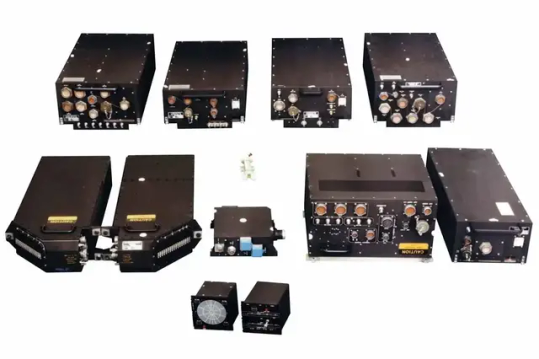
L3 Harris AN/ALQ-172 systems.
"Our opponents continue to evolve, facing advanced and far-reaching threats that challenge our ability to operate in contested environments," says Robert "Trip" Raymond, USAF's Program Leader for EW Technology Development at L3Harris. "It is essential that we provide our B-52 crew with the necessary tools to keep the B-52 relevant, lethal and survivable as the backbone of the strategic bomber force of the United States."
The effort of modernization and support - ALQ-172 Maintenance and Reliability System (MARS) - intends to do exactly that, increasing the average time between failures due to its modular design, while further improving the performance, maintenance capacity and reliability of the system. Thanks to an integrated and improved radio frequency system, crews will be able to simultaneously combat multiple radar threats that interfere with aircraft operations. And by replacing analog systems with more economical software solutions, USAF will be able to reduce the size of B-52 crews from 5 to 4. This frees up resources for additional mission-critical activities.
Ultimately, the updates will further help USAF in its Global Attack Mission and strengthen the effectiveness of the B-52 in modern warfare, while making future upgrades cheaper and easier.
"We are implementing affordable solutions that not only reduce costs, but also provide crews with more advanced protection against the most sophisticated threats detected by radar," said Jimmy Mercado, Program Director at L3Harris. "All this results in a more modern, efficient and effective aircraft, ready to dominate the future struggle."
USAF plans to conduct a test flight with the new electronic warfare capabilities of the B-52 in 2024.
Tags: Military AviationBoeing B-52H StratofortressEW - ELECTRONIC WARL3HarrisUSAF - United States Air Force / U.S. Air Force
Sharing
tweet
Fernando Valduga
Fernando Valduga
Aviation photographer and pilot since 1992, he has participated in several events and air operations, such as Cruzex, AirVenture, Dayton Airshow and FIDAE. He has works published in specialized aviation magazines in Brazil and abroad. He uses Canon equipment during his photographic work in the world of aviation.
Related news
AERONAUTICAL ACCIDENTS
VIDEO: Russian Su-27 fighter in flames falls into the sea near Sevastopol
29/03/2024 - 09:43
An F-16 fighter from the Norwegian air force lands at a Turkish air base in the Turkish city of Konya, in Central Anatolia. Norway, a member of NATO, will donate F-16 fighters to Ukraine, whose forces are involved in a difficult counter-offensive against Russia. (Photo: AP / Burhan Ozbilici)
MILITARY
Putin threatens to attack NATO air bases that host Ukrainian F-16 fighters
28/03/2024 - 21:56
MILITARY
Retirement from F-22 in 2030 is unlikely, since USAF intends to spend $7.8 billion on it before that
28/03/2024 - 21:16
MILITARY
IMAGES: Inaugural flight of the first light combat aircraft Tejas Mk 1A
28/03/2024 - 18:27
Dassault Rafale Fighter. (Photo: Katsuhiko Tokunaga)
MILITARY
France tests Thales' IRST system update for Rafale F4.2 update
28/03/2024 - 15:00
MILITARY
Dutch drone fleet MQ-9A Reaper will receive tactical updates
28/03/2024 - 14:00
37 notes
·
View notes
Text
EOR Companies in India: Why Brookspayroll is Your Ideal Partner for Global Hiring
As global hiring continues to evolve, Employer of Record (EOR) services have become a game-changer for companies looking to expand into new markets without the burden of setting up a legal entity. For businesses targeting the fast-growing Indian talent pool, choosing the right EOR company in India is crucial.
Among the leading names in this space, Brookspayroll stands out as one of the most trusted and efficient EOR companies in India, offering comprehensive solutions that are both scalable and compliant.
What is an EOR and Why Do You Need One in India?
An Employer of Record (EOR) is a third-party organization that legally employs workers on your behalf. This means the EOR handles:
Employment contracts and onboarding
Local labor law compliance
Payroll and tax management
Statutory benefits and insurance
Termination and exit procedures
For companies expanding into India, using an EOR enables you to hire top talent without establishing a local entity. It’s faster, cost-effective, and reduces compliance risks.
Brookspayroll: Among the Top EOR Companies in India
Brookspayroll is a leading provider of EOR services in India, known for its accuracy, efficiency, and personalized HR support. Here's why companies worldwide trust Brookspayroll:
✅ 100% Legal Compliance
Brookspayroll ensures your hiring and HR operations fully comply with Indian labor laws, including PF, ESI, gratuity, income tax, and more.
✅ Fast and Flexible Hiring
Hire Indian employees in a matter of days. Brookspayroll provides ready-to-go infrastructure for fast onboarding — no red tape, no delays.
✅ Customized EOR Solutions
From full-time employees to remote workers and contractors, Brookspayroll tailors its EOR services based on your specific needs.
✅ Transparent Pricing
No hidden charges or unexpected fees. Brookspayroll offers clear and competitive pricing for all EOR services.
✅ Local Expertise + Global Standards
Brookspayroll combines deep local labor law expertise with global best practices, making it a perfect fit for international businesses.
Key Benefits of Partnering with Brookspayroll EOR Services in India
Hiring through Brookspayroll gives you:
🌐 Global Expansion Without Entity Setup
🧾 Simplified Payroll and Tax Filing
🛡️ Risk Mitigation and Legal Protection
🧑💼 HR and Benefits Administration
📈 Focus on Business, Not Bureaucracy
Whether you're a startup, mid-sized company, or enterprise, Brookspayroll’s EOR services in India streamline your hiring and ensure long-term stability.
Who Should Use EOR Services in India?
Brookspayroll's EOR services are ideal for:
International companies hiring Indian employees remotely
Startups testing the Indian market
Enterprises needing quick team scaling
Organizations without a registered business in India
By taking on the role of the legal employer, Brookspayroll allows you to operate compliantly and flexibly, while maintaining full control over your employees’ day-to-day work.
Industries Served by Brookspayroll
Brookspayroll serves a wide range of industries through its EOR platform:
IT and Software Development
Digital Marketing and Design
Finance and Consulting
E-commerce and Retail
Health and Wellness
Engineering and Manufacturing
Their tailored approach ensures sector-specific compliance and workforce strategies.
Why Brookspayroll is Among the Best EOR Companies in India
As one of the most reliable EOR companies in India, Brookspayroll offers:
✅ Local presence with national reach
✅ Expert team of HR, legal, and compliance professionals
✅ Advanced HR tech tools for seamless employee management
✅ 24/7 customer support
Brookspayroll doesn’t just handle employment — it empowers global businesses to scale efficiently in India.
Start Hiring in India Today with Brookspayroll
If you’re looking for a trusted partner to hire Indian talent quickly and compliantly, Brookspayroll is the go-to EOR company in India. Their end-to-end EOR solutions simplify the process of entering the Indian market while ensuring full compliance and transparency.
🔗 Contact Brookspayroll today to learn how we can support your global hiring goals!
3 notes
·
View notes
Text

Valve has released a 25th anniversary update for Half-Life.
Half-Life is free to own on Steam until November 20, 2023 10AM PT / 1PM ET.
Overview
BRAND NEW INTERVIEWS WITH THE HL1 DEV TEAM!
youtube
We got the band back together to celebrate this anniversary, and we invited the fine people at Secret Tape to film it all happening. Getting together after all this time was the perfect opportunity to revisit the game as it existed in its earliest forms, and to talk about how and why it eventually took shape the way it did. Check out the film to see what it was like to be a part of the team, way back then.
THE 25TH ANNIVERSARY UPDATE FOR HALF-LIFE INCLUDES:
HALF-LIFE UPLINK
Originally released as a CD exclusive for magazines and hardware manufacturers, this mini-campaign was built by the Half-Life team right after the game went gold. As this was many people's first experience with Half-Life, we thought it was finally time to bundle it with the main game—no sound card purchase necessary.


4 NEW MULTIPLAYER MAPS
Built by Valve level designers, these new maps push the limits of what's possible in the Half-Life engine.
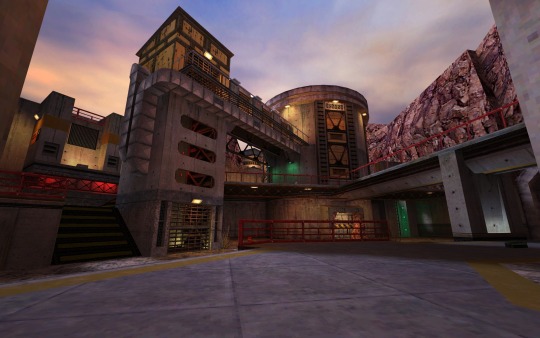
CONTAMINATION
Two-foot-thick steel doors block off access to this contaminated waste facility, which has questionable scientific goals at best. Strap on a gluon gun and roast all intruders.
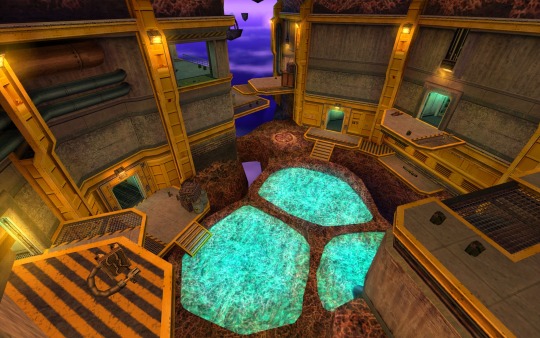
POOL PARTY
Enjoy a relaxing stay at this abandoned Xen outpost built around a cluster of soothing healing pools free-floating in space. How do you breathe here? It doesn't matter!

DISPOSAL
Processing Area 3, a massive radioactive waste plant gone quiet. Tons of room for you and your colleagues to do experiments with a Tau Cannon or some hand grenades.
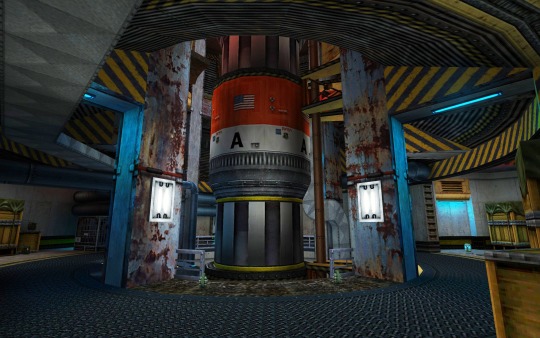
ROCKET FRENZY
The creaking weight of this decaying orbital satellite launch facility somehow feels familiar… If we could switch on the oxygen lines, power, and fuel, we might just be able to light this candle.
UPDATED GRAPHICS SETTINGS
Play the game the way it looked in 1998, but on a modern monitor.
Widescreen field of view!
Option to disable texture smoothing on the GL renderer!
Lighting fixes including the long-lost GL Overbright support!
Software rendering on Linux! Crisp colors, animated water, and unfiltered textures!
CONTROLLER AND STEAM NETWORKING SUPPORT
A proper gamepad config out of the box!
Added support for Steam Networking! Invite your friends or join games instantly with no fuss.
STEAM DECK SUPPORT!

We finally put our game through our own “Verified” tests, and... we failed super hard. So we fixed it! After re-testing the game, Half-Life gets to officially wear the green checkmark.
Now you can play Half-Life on the best handheld gaming computer in the world in glorious 800p with improved controls and UI.
UI SCALING SUPPORT FOR HIGHER RESOLUTIONS
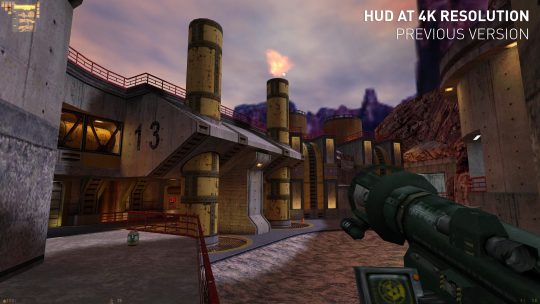
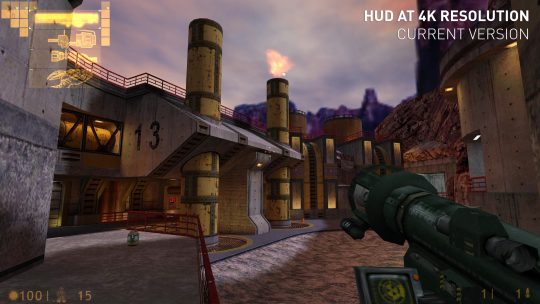
The entire UI has been reworked to scale at larger screen sizes. We built most of this stuff for 640x480 CRTs and apparently some of you have upgraded since then.
RESTORED CONTENT
We brought back the classic Valve logo video with its iconic music and reskinned the menu to match the 1998 build.

IVAN THE SPACE BIKER AND PROTO-BARNEY
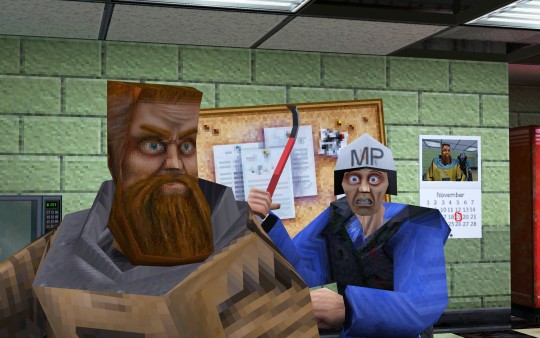
After all this time we finally shipped the original heroes from the alpha builds of Half-Life, available as multiplayer skins!
AS WELL AS THESE RARELY-SEEN EXTRAS!
In 1999, Valve released a CD called Half-Life: Further Data at retail stores, and we're finally including much of that content.
THREE MULTIPLAYER MAPS

Double Cross

Rust Mill
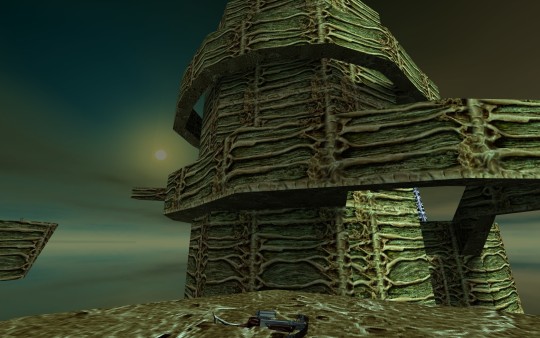
Xen DM
TWO MP PLAYER MODELS

The Half-Life: Further Data CD also included some multiplayer skins made by the original team; we've brought back this incredible skeleton (now with tintable eyes!) and fan-favorite Too Much Coffee Man.
DOZENS OF SPRAYS

While playing a bunch of multiplayer matches we kept wanting more sprays... So we grabbed several megabytes of them from the Further Data release!
BUG FIXES AND CHANGE NOTES
New Content
Now Verified on the Steam Deck (and our native Linux runtime has been set as the default).
Half-Life: Uplink — the original standalone Half-Life demo — has been added to the game, and is accessible through the "New Game" menu.
Added four all-new Half-Life Deathmatch maps: contamination, pool_party, disposal, and rocket_frenzy
Added three old Half-Life Deathmatch maps formerly available only on the "Half-Life: Further Data" CD: doublecross, rust_mill, xen_dm.
Added Ivan the Space Biker, Prototype Barney, Skeleton, and Too Much Coffee Man as player models to Half-Life Deathmatch.
Added dozens of new sprays formerly available only on the "Half-Life: Further Data" CD.
Added support for Steam Networking, allowing easy multiplayer via Steam's Join Game and Invite features.
Added support for Steam Friends Rich Presence, allowing your friends to follow your journey through Black Mesa.
Nostalgia
Brought back the original Valve Intro video. Can be skipped with the "-novid" launch command.
Updated main menu to a design inspired by the game's original 1998 main menu.
Changed the default models to the original (non "HD") models.
Gameplay Changes
Improved physics for throwing grenades.
Improved randomness for initial spawn points in multiplayer.
Improved satchel charge controls: primary fire now always throws a new satchel, and secondary fire always detonates.
Fixed push-able entity movement being based on framerate.
Fixed players with high framerates freezing in place on death in multiplayer.
Fixed some cases where the player could get stuck in place on level transitions.
Fixed some cases where characters would interrupt important dialogue with their "greetings" dialogue.
Fixed weapon view-bob angles.
Fixed red barrels at the start of Surface Tension not launching as intended.
Fixed Snarks attacking FL_WORLDBRUSH entities (such as func_walls).
Fixed players sometimes failing to deploy a snark while crouching and looking down.
Fixed certain convars ("pausable" and "sv_maxspeed") being set to incorrect values when entering a singleplayer game after a multiplayer game.
Fixed singleplayer auto-aim setting being changed when entering a multiplayer game that disallows auto-aim.
Fixed the flashlight HUD showing empty after loading a savegame.
Fixed rockets in CONTENTS_SKY not always detonating.
Fixed incorrect bullet impact sounds for NPCs.
Fixed gauss gun making a loud static noise if it was charged across level transitions.
Fixed a crash in mods that display keybinds in their UI.
Fixed singleplayer weapons not auto-switching away when exhausted (grenades / snarks / satchels / etc)
Fixed interpolation artifacts when animated models are moved by other entities.
Fixed some buffer overflow exploits.
UI Changes
Main-menu background and buttons have been reskinned, and now scale based upon screen resolution without stretching, supporting background image layouts up to 3840x1600.
In-Game HUD now uses double or triple sized sprites when playing at higher resolutions.
UI dialogs and in-game fonts now scale to improve readability at high screen resolutions.
In-Game HUD HEV suit display has been shifted to the left of the screen, and no longer changes position at larger screen resolutions.
Added an "Enable texture filtering" setting.
Added an "Allow widescreen Field of View" setting to correct non-anamorphic FOVs, for widescreen and ultrawide displays.
Re-organized all the Settings screens to improve legibility, and support controller navigation.
Updated the Pause menu to be aware of the current gameplay mode.
The default server name and multiplayer player name are now based on the player's Steam Persona.
The Steam platform menu has been removed, now that all its features are in Steam itself.
Fixed application icon rendering incorrectly when using the software renderer.
Fixed player and spray images not updating their coloring on the settings screen.
Removed the now very unnecessary "Low video quality. Helps with slower video cards." setting.
Input Changes
Improved support for keyboard and controller navigation everywhere.
Added "Lower Input Latency" option: Synchronizes the CPU and GPU to reduce the time between input and display output.
Fixed issues that caused jerky mouse / joystick input.
(We basically rewrote it all - if you've got a custom Steam Input controller configuration, you should rebuild it from our newly published Official Configuration).
Multiplayer Balancing
Increased the 357 damage from 40 → 50.
Hive Hand reload time has been reduced from 0.5s → 0.3s per shot, and it will be selected at higher priority than the pistol on pickup.
MP5 now always starts it with full ammo when picked up.
Players no longer drop empty weapons, and any that are dropped are reloaded by what's in the dying player's backpack.
Improved client-side prediction to reduce "ghost shots". Like Counter-Strike, consider hitboxes and not just bounding boxes for hits on the client.
Fixed network predicted crowbar swing damage being incorrect.
Rendering
Added supported for UI Sprites and Texture files larger than 256x256.
Added support for UI Font special render modes: "blur" and "additive".
Added setting to turn off texture filtering when using the OpenGL renderer.
Default resolution is now based on the resolution of the desktop, instead of a 640x480 window.
Default gamma has been decreased from 2.5 → 2.2, now that we aren't all playing on CRTs.
Software renderer will now correctly filter out incompatible resolutions, unless there is only 1 resolution available on the display.
Restored OpenGL overbright support.
Fixed fullscreen software renderer crashing on systems that don't support 16-bit color.
Fixed software renderer being stretched when using widescreen resolutions.
Fixed skyboxes and sky color incorrectly carrying over when transitioning maps in multiplayer.
Fixed the game appearing too dark after modifying video settings.
Fixed MSAA in windowed mode.
Fixed mipmap rendering on studio models.
Fixed gluon gun sprite rendering in multiplayer.
Fixed gluon gun sinusoidal noise being incorrect.
Various optimizations to support the newly increased engine limits.
OpenGL optimizations for the Steam Deck.
Engine Improvements for Mod Makers
Increased maximum limit of dynamic sound channels from 8 → 32.
Increased maximum limit of sentences in the sentences.txt file from 1536 → 2048.
Increased maximum number of entities (MAX_EDICTS) from 900 → 1200.
Increased MAX_PACKET_ENTITIES increased from 256 → 1024.
Increased MAX_GLTEXTURES from 4800 → 10000.
Increased software renderer geometry limits: max spans 3000 → 6000, max surfaces 2000 → 4000, and max edges 7200 → 14400.
Cycler and func_button entities can now be the entity target for scripted_sentence entities, and are allowed to speak in multiplayer.
Incorporated func_vehicle entity support from Counter-Strike, for mod-makers to use. Full SDK update will come later, but level designers can use it now.
Native Linux Build
Added support for the software renderer.
Improved font rendering.
Many stability and behavior fixes.
Other
Localization files updated.
Miscellaneous security fixes.
Notes
The previous version of the game has been archived to a publicly visible Beta branch named "steam_legacy", with the description "Pre-25th Anniversary Build." If a mod or feature is behaving in an unexpected way, you may need to run this archived build until the issue is resolved in the default build.
We now consider this anniversary version of Half Life to be the definitive version, and the one we'll continue to support going forward. Therefore, we'll be reducing the visibility of Half Life: Source on the Steam Store. We know Half-Life: Source's assets are still being used by the Source engine community, so it'll remain available, but we'll be encouraging new Half-Life players to play this version instead.
WALLPAPERS
Celebrate 25 years of Half-life by decorating your desktop and mobile phone.






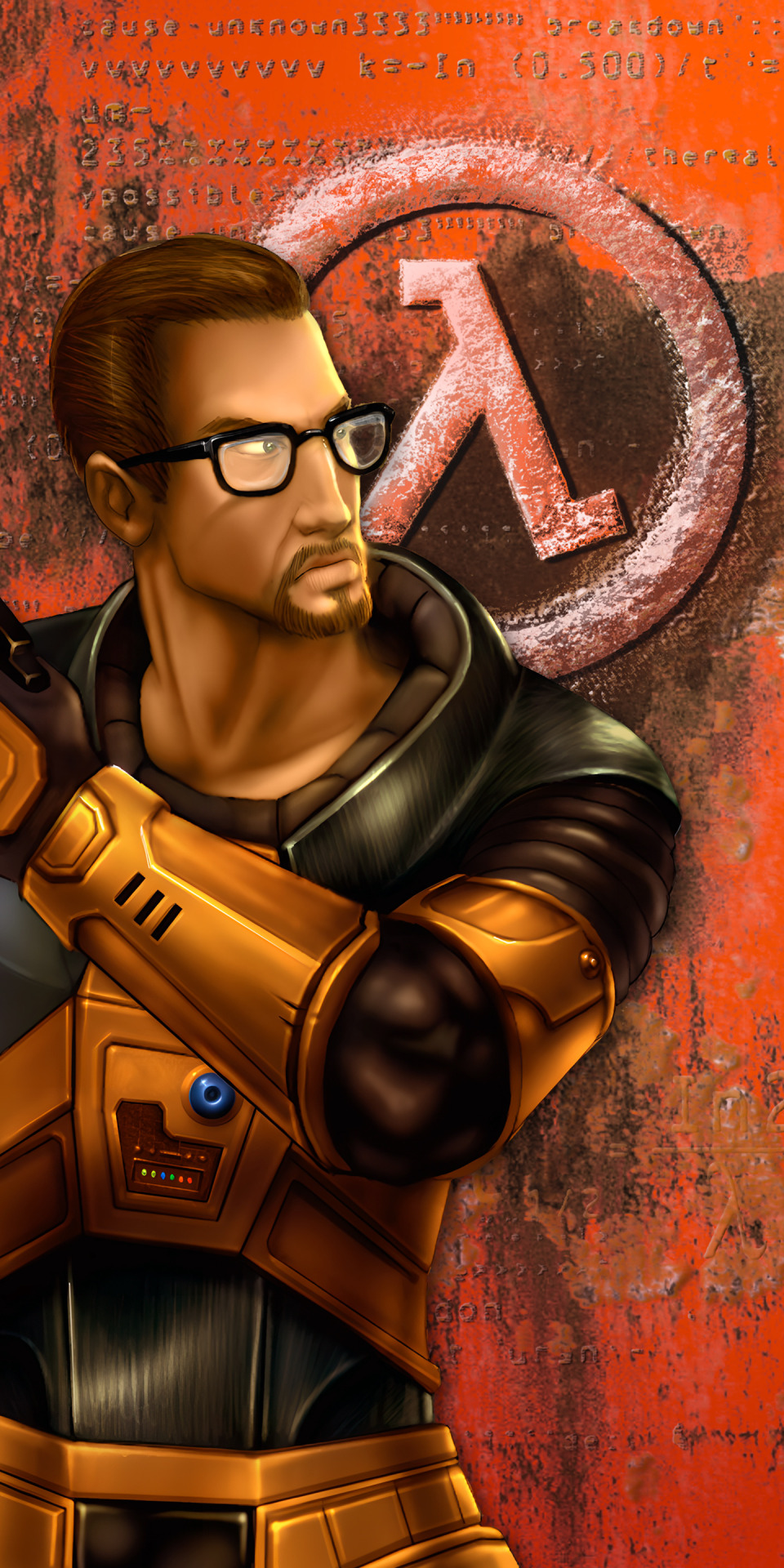

33 notes
·
View notes
Text
Antutu Benchmark Comprehensive Guide to Understanding and Using It
Introduction
Antutu Benchmark is one of the most popular and widely used performance testing tools for smartphones and other devices. It provides a detailed score based on multiple tests that measure CPU, GPU, memory, and user experience performance. Whether you’re a tech enthusiast, a buyer comparing devices, or a developer optimizing apps, Antutu Benchmark offers valuable insights into device capabilities.
What is Antutu Benchmark?
Definition and Purpose Antutu Benchmark is an app that runs a series of tests on your device to evaluate its overall performance. It assesses different components like the processor, graphics, memory speed, and user interface fluidity to generate a comprehensive score. This score helps users compare devices and understand their strengths and weaknesses.

Why Use Antutu Benchmark? Using Antutu Benchmark is important because it provides an objective, standardized way to measure device performance. It helps consumers make informed decisions when purchasing smartphones, tablets, or other gadgets and helps manufacturers optimize hardware and software.
How Does Antutu Benchmark Work?
Key Testing Areas Antutu performs tests in several categories including CPU performance (calculations and multitasking), GPU performance (graphics rendering and gaming), memory speed (RAM and storage performance), and user experience (smoothness of operation).
Score Calculation After running all tests, Antutu combines results into a single score. Higher scores mean better overall performance. This score is often used to rank devices in performance charts and reviews.
Benefits of Using Antutu Benchmark
Device Comparison Made Easy With Antutu Benchmark, you can compare scores of different devices to find which performs better in real-world scenarios.
Helps Identify Bottlenecks By breaking down scores into CPU, GPU, and memory, Antutu helps identify which component might be slowing your device.
How to Use Antutu Benchmark?
Installation Process You can download Antutu Benchmark from official app stores or trusted sources. After installation, simply open the app and start the benchmark test.
Running the Test Make sure your device is charged and close background apps for accurate results. The test takes several minutes and runs through all performance checks automatically.
Common Questions About Antutu Benchmark
Is Antutu Benchmark reliable? Antutu is widely accepted but, like any benchmark, it has limitations. Scores can vary based on device conditions and software versions.
Does running Antutu affect my device? The test is safe but can cause the device to heat up temporarily due to intensive processing.
Tips to Get Accurate Results on Antutu Benchmark
Close All Apps Before testing, close any apps running in the background to avoid interference.
Use the Latest Version Always update Antutu Benchmark to the latest version to get the most accurate and relevant tests.
Antutu Benchmark Scores: What Do They Mean?
youtube
Understanding Scores Scores above 500,000 indicate high-end performance, suitable for gaming and heavy multitasking. Mid-range devices typically score between 200,000 to 400,000.
Comparing Scores Over Time Newer devices usually score higher, reflecting advancements in hardware technology.
Alternatives to Antutu Benchmark
Other Popular Benchmark Apps Besides Antutu, apps like Geekbench, 3DMark, and PCMark offer alternative performance tests focusing on specific aspects like CPU or graphics.
When to Use Alternatives Using multiple benchmarks gives a more rounded view of your device’s capabilities.
Conclusion Antutu Benchmark remains a powerful tool to measure and compare smartphone and device performance. By understanding how it works and interpreting the scores correctly, users can make smarter purchasing decisions and optimize their tech experience.
FAQs
Q1: Can Antutu Benchmark be used on all smartphones? Yes, Antutu supports most Android devices and has a version for iOS with limited features.
Q2: Does Antutu Benchmark require internet? No, you can run the benchmark offline, but internet is needed to check online rankings.
Q3: Why are my Antutu scores different on the same device? Scores can vary due to temperature, battery level, and background processes.
Q4: Can Antutu detect fake or modified devices? Antutu includes security checks that can flag devices with counterfeit or tampered hardware.
Q5: Is a higher Antutu score always better? Generally yes, but real-world performance depends on software optimization and usage scenarios too.
2 notes
·
View notes
Text
Dell
"Male", he/him, 165cm, Hyperdyne Systems 120-A/2
Role: Medical officer/biologist
Assignment: Special Research Vehicle - Solaris
Backstory:
Although Dell is the same model synthetic as Ash, he was made in an earlier round of releases. Minor differences in software/hardware specs means his capabilities also differ slightly.
He was brought on to the Solaris, a W-Y and 3WE funded special research vessel, as part of the early test run of synthetic officers on long-haul flights. Their medical officer had just retired and they needed a replacement.
Dell incurred some manufacturing defects, he was put on watch in case there was significant damage instead of being destroyed outright. His issues were deemed minor and so he was put on the B-grade product catalogue. It was Jude Wilheard, the Solaris' chief engineer's idea to check the cheaper synthetics.
Personality and mannerisms:
As a crew mate he's well-meaning but dense. Unlike Ash, he's very wary of the crew's health and safety, but also easily moved to action by their collective bravado and impulsiveness. (there is no voice of reason on this boat, sorry)
He is terminally curious but lacks situational awareness, often leading him into trials and tribulations ranging from walking into doors to getting caught in fights that he could have avoided.
A bit too willing to trust humans and has a hard time recognising red flags. He's also skittish and easily shaken and has a tendency to stall/freeze up in unfamiliar situations. Which means he often gets into trouble and can't get himself out.
He has a one-track mind and dedicates himself to his work and enjoys learning about alien lifeforms (very much not aware that he's in a horror movie world.)
The speed of his processing is slightly below target for his specs and is noticeably slower than the current models. Due to the less than stellar comments from the company's product testing department, he underestimates his abilities and is often unsure of his own judgement. He's also a bit of a people-pleaser and wants all humans to like him very much, is easily manipulated, and becomes frustrated quickly.
Participating in human activities is a key part of his daily life, and he's heavily involved with the humans' personal lives. His crew is very close with him and they all function as a single unit, very in sync with each other's habits and needs.
Something else that differentiates him from Ash is his body language. He moves in a meandering, unhurried manner rather than the sharp and purposeful way most synthetics carry themselves. Dell experiences a lot of emotions and expresses them often, he's quite animated and easy to read.
Easily excitable, friendly and gullible, his personality is quite a surprise to those expecting the detached demeanour of most synthetics, almost the opposite of Ash.
Appearance and other physical attributes:
A man in his mid fourties, short and slightly chubby. Looks almost exactly like Ash except for a 'scar' on the left side of his head from an injury that's hidden by his hair and the slightly discoloured splotch under his left eye. It's barely visible and most people don't notice unless its pointed out.
Compared to Ash, Dell has a 'kinder' looking face, his standard expression is more placid, which sometimes gives people the impression that he's an airhead.
While it's not immediately obvious from the outside, his right hip joint is structurally malformed and causes the limb to rotate inwards which also affects the positioning of his leg. The deformity does not impact his mobility much aside from a noticeable limp and uneven stance, he walks slowly to minimise the effect. Most days he doesn't need a mobility aid unless the misaligned components become worn down, requiring maintenance.
Wears a different outfit/uniform that's more suited for field work
Durable woven, water-repellent synthetic fiber work jacket with the sleeves rolled up to the elbow and matching cargo pants. Muted grey-green with a slight shine.
Inner layer is a white, sleeveless high-necked shirt
Often paired with white, wrist length cotton PVC dotted gloves
Off-white, steel-toed work boots
Solaris and Weyland-Yutani patches on the jacket sleeves
Green cotton cadet cap
Extendable cane with built in stun gun function (Wilheard's design)
Misc. info:
Likes to play with bugs and make entomology mounts
Powers down to sleep mode during night hours. Sleeps curled up in a ball and sleepwalks if alone due to faulty motor suppression mechanism
Battery issue resulting in reduced time span between charges
Infographic of the A/2s for comparison
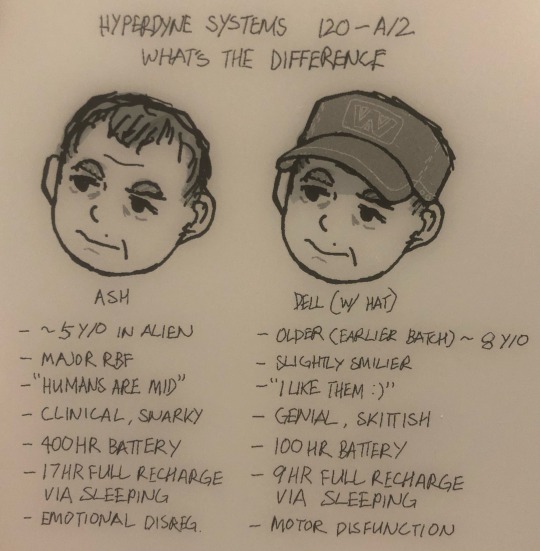
#alien oc#synthetics#dell (oc)#ash#alien series#alien 1979#alien franchise#alien movie#ash (alien)#alien#jude wilheard (oc)#writing#ocs#Dell is by far one of my favourite ocs#blasting him with the neurodivergent and disabled beam#his crew care for him lots#my art#not sure if there are typos
10 notes
·
View notes